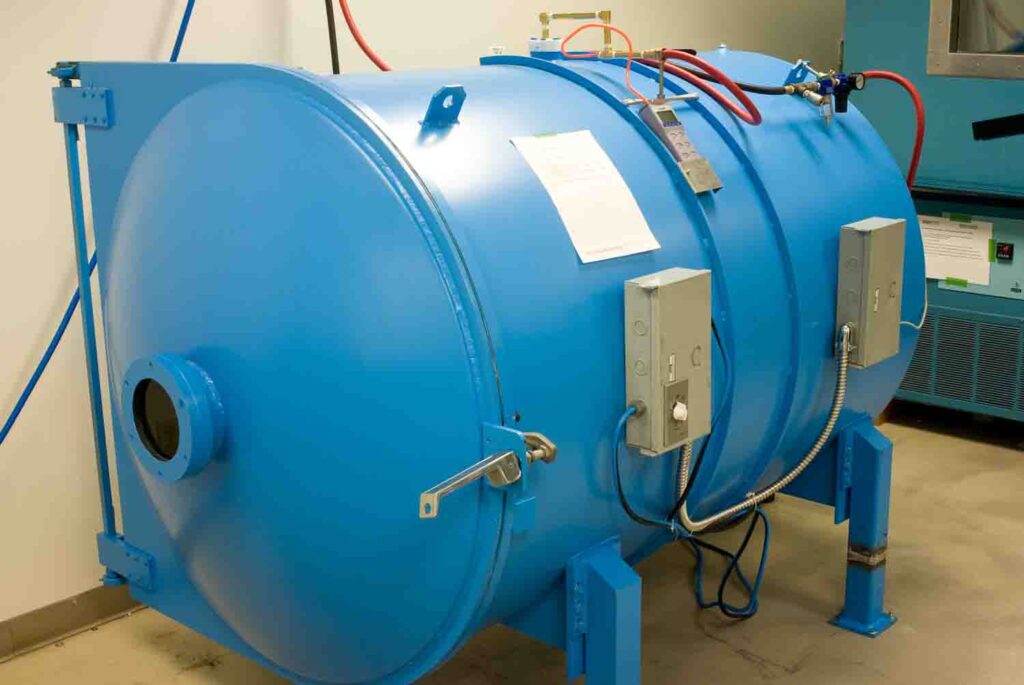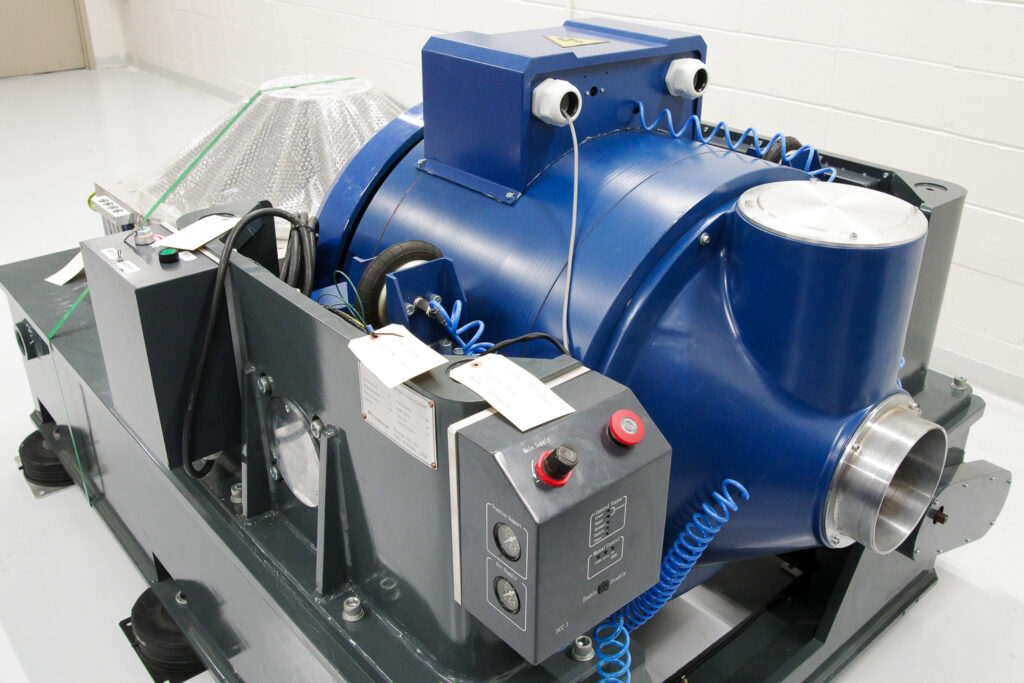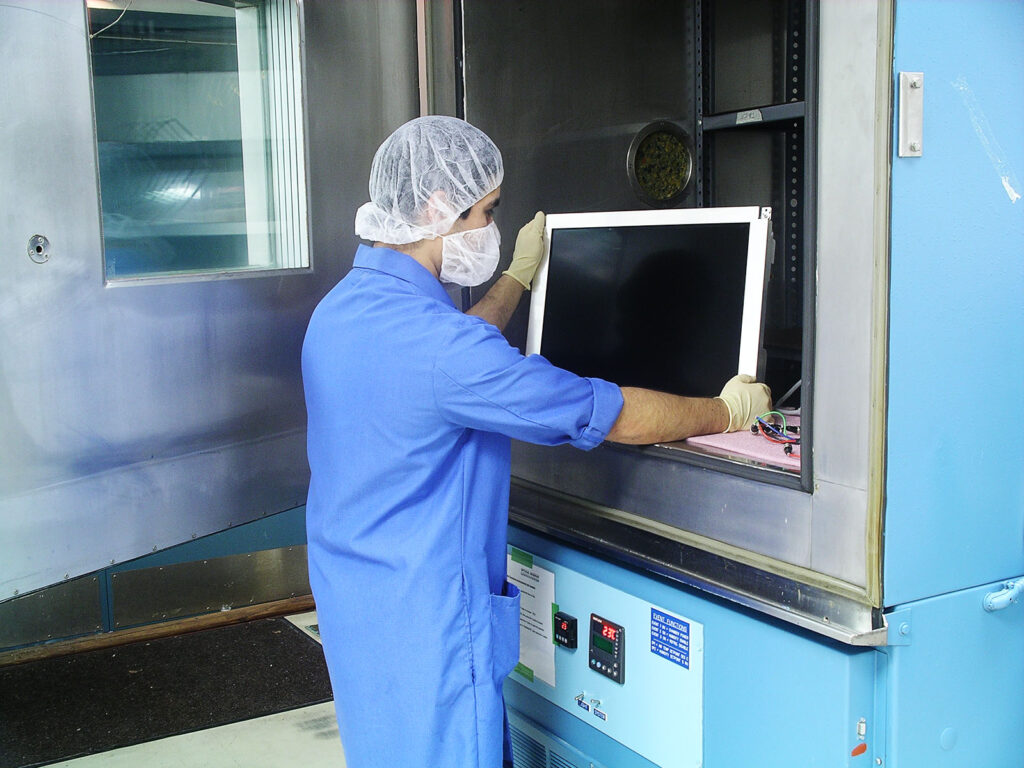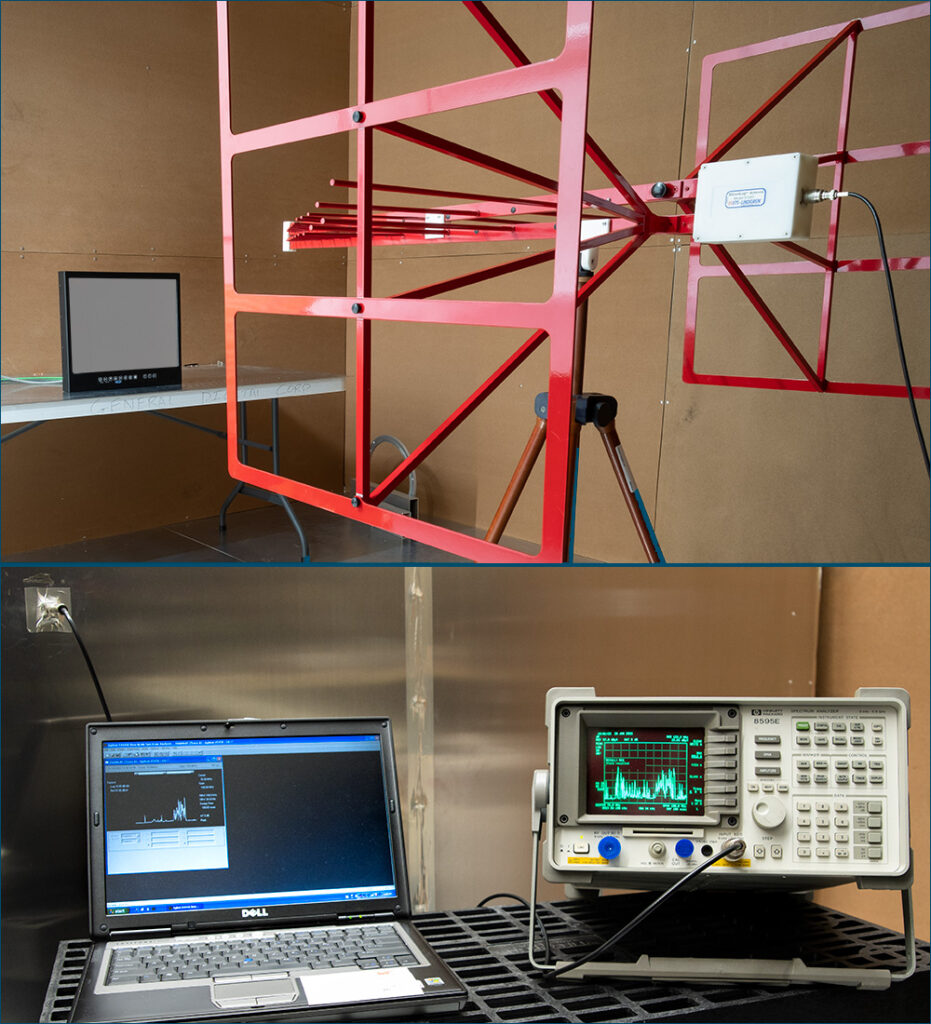People count on our rugged display systems to withstand the pressures of the harshest environments on (or off) Earth. The ultimate seal of approval that a product will function under stress is a certification. However, formal certification is no small effort, and the cost alone is prohibitive for most smaller projects.
So how can you know that your rugged monitor will work in the field, without it being formally certified? We achieve this through a process called “Confidence Testing.”
While the majority of product that leaves our facility isn’t formally certified, sometimes it is required by the end user. When a system does require formal certification, we don’t just send your product off to a third-party for results—we typically have representative on-site to support the product through every step of the process. We’ve spent countless hours supporting and observing our products being tested at certification houses, giving us valuable insight into the design solutions that successfully pass and providing us with knowledge that can be leveraged when building subsequent iterations.
It’s also given us insight into the capital equipment required to perform these tests. We’ve integrated many of the testing processes we’ve witnessed into our own quality management system, which allows us to test products as needed, ensuring that they will work flawlessly at the user’s command.
Altitude & Pressure Testing – Vacuum Chamber

If you’ve ever watched a baseball game at Coors Field, you know that atmospheric conditions are dramatically varied at different altitudes. Equipment that functions perfectly fine at sea-level doesn’t necessarily hold up at 30,000 feet. Standards such as MIL-STD-810 and DO-160 outline what component behavior is acceptable when undergoing rapid decompression.
Our vacuum chamber uses altitude simulation to replicate the sudden pressure changes associated with an aircraft takeoff/landing, and is a crucial part of our quality control process for all airborne equipment.
Vibration Testing – Electro-Dynamic Shaker

If you took the bus to public school growing up, you probably remember feeling like you were sitting on a vibration table. That was on a paved road at relatively low speeds—imagine how much more vibration a combat vehicle faces when deployed in an active war zone.
With the recent purchase of our Electro-Dynamic Vibration Test System, we now have the ability to test vibration compliance to MIL-STD-810 right here at our facility.
This system comes equipped with a number of features, including a 4-channel vibration controller, allowing us to simulate random, sine, & classical shock, as well as calibrating our own parameters depending on customer requirements.
Environmental Stress Screening (Temperature & Humidity) – Thermotron

Have you ever noticed that when you’re outside in cold weather for a prolonged period of time, your phone battery dies quicker and your touch screen is less responsive? That’s because you’re using the device outside of its operating temperature range (for example, the operating temperature range for an iPhone is 0° – 35° C or 32° – 95° F).
This is a standard range for consumer electronics, but some applications (desert, arctic, high-altitude, etc.) require more variation.
Our Thermotron Temperature & Humidity Chamber allows us to perform thermal testing and profiling of electronic assemblies for shock, boundary, dwell and customer-specified temperature profiles. We also perform humidity testing and profiling for both condensing and non-condensing levels.
A recent upgrade to our chamber now supports temperature changes up to 10 degrees per minute, giving us the ability to simulate temperature shock associated with the rapid ascent/decent of an aircraft. For reference, temperature changes an average of 3.5°F for every 1,000 feet of height.
IP/NEMA Ratings (Sealed) – Dunk Tank & Hose
It’s no secret that liquids and debris wreak havoc on electronics. One of our first display products, the VuePoint, was actually designed to withstand the humid, salty conditions of a potato chip factory. For some marine, outdoor, and industrial applications where contact with water is unavoidable, some degree of environmental sealing may be necessary.
Products required to be fully sealed are completely immersed in a water tank for a prescribed time. After removal, we verify that water has not breached our seals and test that the device is still fully operational.
For products that are sealed from the front only, we apply water directly onto the front of the unit to ensure that water does not penetrate the front seal or contaminate the vital electronics behind the display.
Optionally, we can provide test connectors on the enclosure to facilitate a pressure test to validate sealing.
Electromagnetic Interference Testing – Shielded EMI Lab

There’s a reason why you need to set your phone to “airplane mode” after you board an aircraft. Unwanted frequency emissions can interfere with other electronics, especially communication systems. In military and aviation applications, small interruptions can be a matter of life and death.
All electronics emit some level of frequency, and when required, we take measures to prevent frequency from radiating out of the device, causing potential disruptions to other equipment, and to ensure our electronics are not susceptible to outside or conducted emissions.
We have a shielded EMI lab within our facility that utilizes a wideband directional antenna in conjunction with an HP8595E spectral analyzer and Faraday cage. This setup allows us to test devices and troubleshoot on the fly if we find unwanted emissions, ensuring compliance to EMI standards such as MIL-STD-461.
Photometric Testing
As a display manufacturer, our team of optical engineers have a thorough understanding of photometrics. We’re able to perform a variety of tests here in our in-house optics lab, including:
- Quantification of standard and Weber contrast of OEM, customer-supplied, and General Digital-enhanced displays, using multiple independent high brightness light sources conforming to MIL-STD-3009 for NVIS compatibility
- Quantification of optical luminance, uniformity, and chromaticity using multiple devices including a Minolta CS100/LS110 non-contact colorimeter, Klein K10 tristimulus colorimeter, and X-Rite spectrophotometer
- Calibration of display color using SpectraCal Calman Pro software for accurate color representation and color coherence across multiple display systems and conformity to D65 standards
- Quantification of antiglare gloss properties of overlays and touch screens using M&I Instruments / TP-00683 Triple Angle, 20/60/85 continuous reading glossmeter
- Quantification of wideband spectral components and NCIS capability using QE6500 spectrometer and custom-designed data analysis software
- Point source spectral component and power measurements
When you buy a display system from General Digital, you can have confidence in its ability to perform to specification. To learn more about our recent purchases, check out our New & Noteworthy page.
About General Digital
Since 1973, General Digital has provided world-class engineering services for safety-critical environments, including all branches of the U.S. Armed Forces. For more information about our products and services or to schedule a consultation with a Sales Engineer, Contact Us or call (860) 282-2900.

